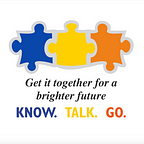Evolving Communication for Improved Health
In the last century, communication has evolved to a state of utter amazement. People used to physically go to each other to pass on an information or assemble together in one place or use a town crier to go into the community to continually repeat the information until it is assumed to be heard by everyone. But as time progressed, sharing information with one another evolved for better effectiveness and convenience. Moving from letters to telegrams and then telephone made interpersonal communication much easier. Better still, the advent of radio and television made reaching millions of people at the same time achievable. However, with the birth of the internet, a great feat was achieved. Millions of people, irrespective of their race, location or gender would be in a meeting room all at the same time without moving a foot from their houses. The digital media revolution created media platforms and mobile phone access, serving as avenues for both interpersonal and large-scale communication.
As more people were being reached, the possibility of framing the thoughts of people on key issues became apparent. Sometimes, this was used for good and at other times, it was used to misinform or mislead people in ways that could have terrible physical consequences. A clear example of this is the misinformation and misconceptions shared across various digital media spaces about modern contraceptives. This has resulted in many women not using any form of contraception as a result of fear, thus being unprotected from unplanned pregnancies and the ripple effects of that.
With this in mind and determined to increase awareness and the benefits of family planning, the Sustaining Programs and Partnerships on Reproductive Health Transformation (SuPPoRT) Initiative facilitated a 2-day capacity building session for the Oyo State Social and Behavior Change Communication (SBCC) Committee on use of digital media to promote family planning messaging at all levels. The session focused on using digital media for storytelling, audience profiling, mobile photography and videography, identifying and using analytic strategies, and promoting content across social media.
The Oyo State SBCC Committee became functional in 2021 and is made up of staff from the State Ministry of Health (Health Education Unit), National Orientation Agency (NOA) and the Reproductive Health unit of the Primary Health Care Board. These agencies are responsible for health promotion in the local government areas of the State, with special focus on the hard-to-reach (and sometimes underserved) areas of the State.
By building their capacity on the use of digital media for family planning conversations, the SuPPoRT Initiative is improving their ability to connect with even more people, especially young people who are more susceptible to misinformation online.
